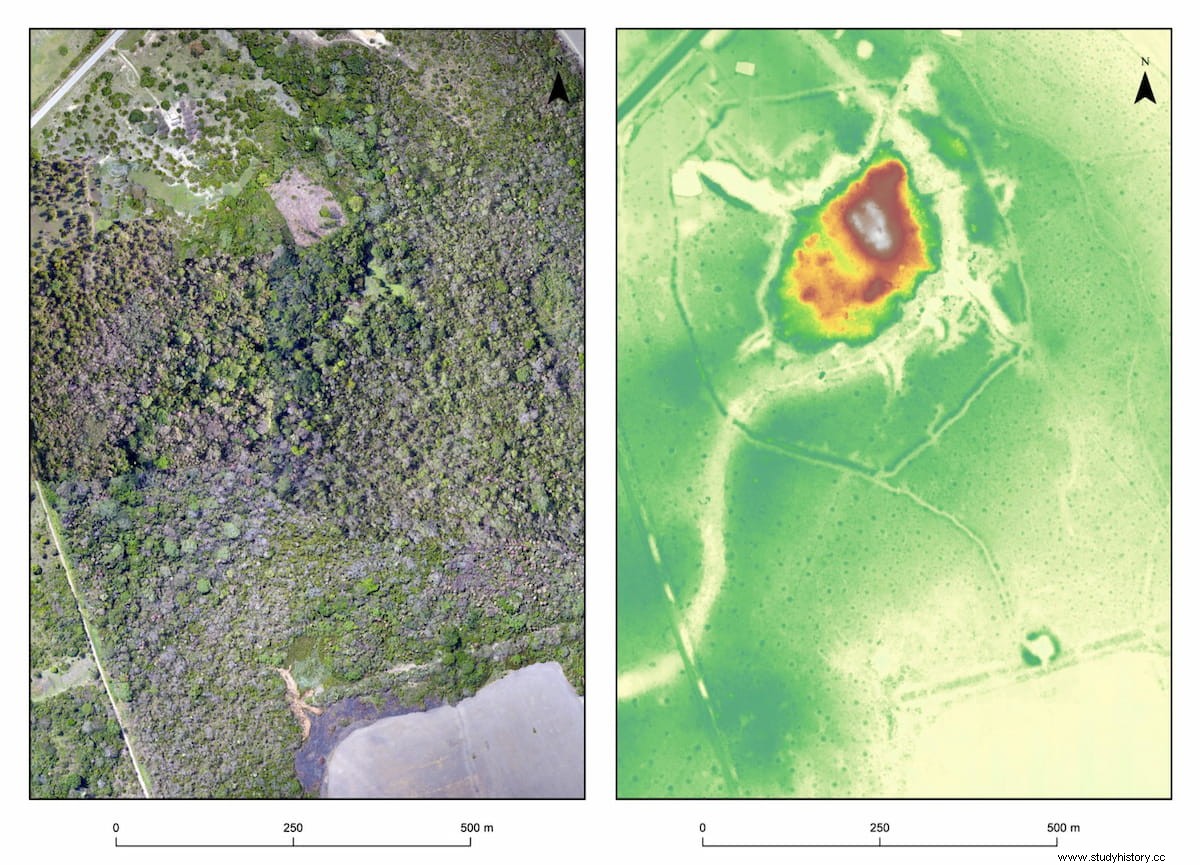More than 20 years ago, Dr. Heiko Prümers, from the German Archaeological Institute, and Prof. Dr. Carla Jaimes Betancourt, from the University of Bonn, then a student in La Paz, began archaeological excavations in two mounds near the town of Casarabe, in Bolivia.
Los Llanos de Mojos (the Benian plain of northern Bolivia) is a southwestern fringe of the Amazon region. Although the savannah plain, which is flooded several months of the year during the rainy season, does not favor permanent settlements, there are still many visible vestiges of the time before the Spanish colonization, at the beginning of the 16th century. In addition to the mounds , these tracks mainly include causeways and canals that often lead for miles in a straight line through the savannah.
This indicated a relatively dense settlement in pre-Hispanic times. Our goal was to carry out basic research and trace the settlements and life there says Heiko Prümers. In previous studies, the researchers have already found that the Casarabe culture - named after the nearby town - dates from the period between 500 and 1400 AD. and, according to current knowledge, it extended over a region of about 16,000 square kilometers. The mounds they turned out to be eroded pyramidal stumps and platform buildings.

The first conventional surveys revealed a core in terraces, a wall of ditches that closed the deposit and channels. Furthermore, it became clear that some of these pre-Hispanic settlements were of enormous size. However, the dense vegetation they were under prevented us from seeing the structural details of the monumental mounds and their surroundings , says Carla Jaimes Betancourt, from the Department of Anthropology of the Americas at the University of Bonn.
LIDAR technology used for the first time in the Amazon
To find out more, the researchers used for the first time in the Amazon region the airborne laser technology LIDAR (Light Detection and Ranging ). This technology consists of studying the terrain with a laser scanner attached to a helicopter, a small plane or a drone that transmits around 1.5 million laser pulses per second.
In a subsequent evaluation step, the vegetation is digitally removed creating a digital model of the earth's surface, which can also be viewed as a 3D image. The first results were excellent and demonstrated the effectiveness of the technology even in dense forests. From that moment on, the desire arose to map the great settlements of the Casarabe culture using LIDAR technology , says Dr. Heiko Prümers, director of the study.
For the current study, in 2019 the team together with Prof. Dr. José Iriarte and Mark Robinson from the University of Exeter, mapped a total of 200 square kilometers of the Casarabe cultural area. The evaluation carried out by the company ArcTron3 gave rise to a surprise. What came to light were two remarkably large sites, 147 and 315 hectares, in a dense four-tier settlement system. Spanning 1.5 kilometers north-south and roughly a kilometer east-west, the largest site ever found is as large as Bonn was in the 17th century , affirms the co-author, Dr. Carla Jaimes Betancourt.

It is not yet possible to calculate how many people lived there. However, the layout of the settlement itself tells us that planners and many active hands were at work here says Heiko Prümers. The modifications carried out in the settlement, for example the extension of the moat system of the wall, also speak of a reasonable increase in the population. For the first time we can refer to pre-Hispanic urbanism in the Amazon and show the map of the Cotoca site, the largest settlement of the Casarabe culture that we know of so far , stresses Prümers. Similar sparsely populated agrarian cities already existed in other parts of the world.
LIDAR shows an anthropogenically altered landscape
LIDAR mapping reveals the architecture of the large squares of the settlement. Tiered platforms topped by U-shaped structures, rectangular platform mounds, and conical pyramids (up to 22 meters high). Causeway-like pathways and canals connect individual settlements and indicate a close social fabric.

At least one other settlement can be found within a five kilometer radius of each of the currently known settlements. Thus, the entire region was densely populated, a pattern that reverses all previous ideas , says Carla James Betancourt, from the University of Bonn.
The researchers stress that, despite all the euphoria over site maps and the possibilities they offer for reinterpreting settlements in their geographical environment, the real archaeological work has only just begun. The goal for the future, they say, is to understand how these great regional centers worked.
Time is running out because the expansion of mechanical agriculture is destroying a pre-Columbian structure every month in the Llanos de Mojos region, including mounds, canals and causeways says Betancourt. In this sense, Lidar is not only a tool to document archaeological sites, but also to plan and preserve the impressive cultural heritage of the indigenous peoples of the Amazon.
